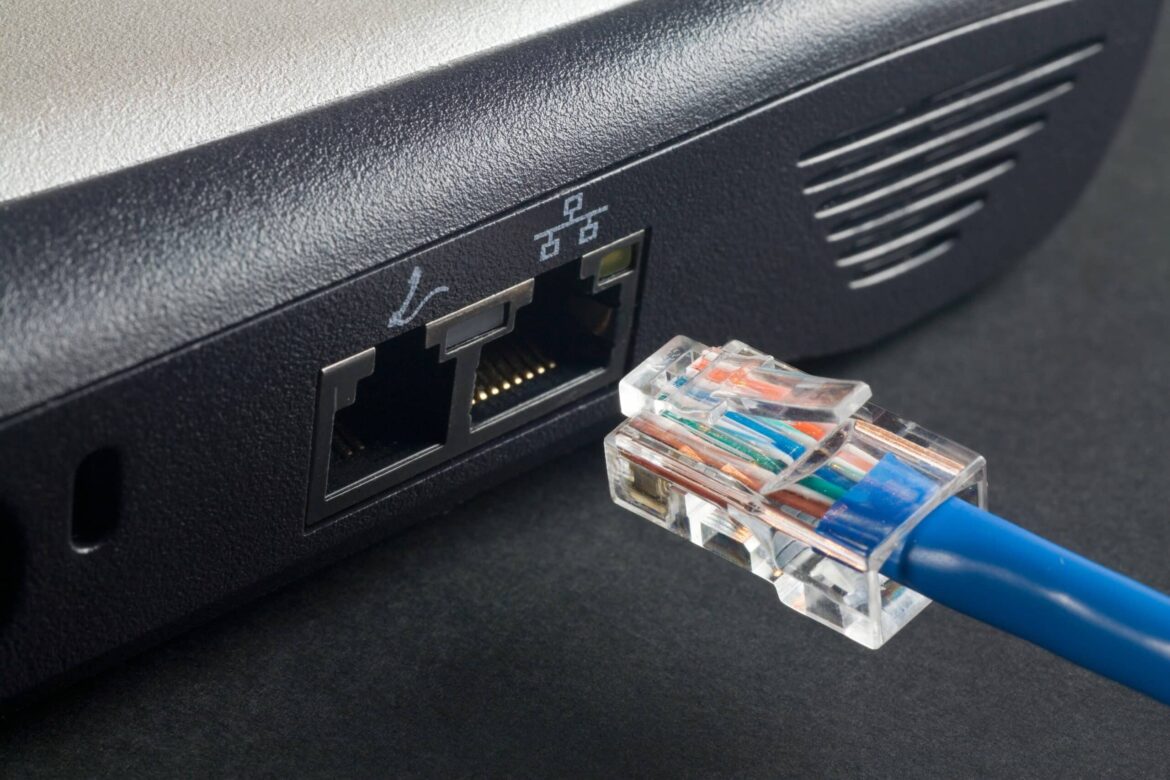813
If your PC does not recognize the LAN cable, there may be several reasons for this. We will show you the most common causes of this problem and give you practical tips on how to quickly and easily restore your connection.
PC does not recognize LAN cable: This may be the cause
If your PC does not recognize the LAN cable, there can be various causes. The most common causes are a defective cable, a faulty socket, disabled adapters, or driver problems.
- Defective LAN cable: A broken or damaged LAN cable is one of the most common causes. Test the cable on another device or try a different cable on your PC to rule out a defect.
- Loose connection: Check that the cable is securely plugged into the socket on the PC and the router. Sometimes the plug does not fit properly.
- Defective LAN socket: The interface on the PC may be damaged by impact, moisture, or wear. Check whether the LEDs on the socket light up when the cable is plugged in. If not, the socket may be defective.
- Disabled network adapter: The network adapter may be disabled in the system. Re-enable the adapter via the Control Panel or Device Manager.
- Incorrect power saving settings: Some systems disable the network adapter to save power. In the power options, set the adapter so that it is not automatically disabled.
- Driver problems: Outdated, faulty, or incompatible drivers can prevent the LAN cable from being recognized. Update or reinstall the drivers for the network adapter.
- Incorrect network settings: Sometimes restarting the PC, resetting the network adapter, or running network commands (e.g., netsh winsock reset in the command prompt) can help.
- Router or modem problems: Make sure that the cable is connected to the correct port on the router and that the router/modem is working properly. Restarting the router and modem may help.
Step-by-step solutions
The steps below will usually help you quickly narrow down the cause and then fix it.
- Check the LAN cable for damage and try a different cable.
- Check that the cable is properly and securely plugged into the sockets.
- Check that the LEDs on the LAN socket on the PC are lit.
- Restart the PC and, if necessary, the router/modem.
- Go to “Control Panel” ☻ “Network and Sharing Center” ☻ “Adapter Settings” and activate the network adapter if necessary.
- Update or reinstall the network drivers, downloading them from the manufacturer if necessary.
- Check the power options and disable the automatic shutdown of the network adapter.
- Reset the network settings (e.g. via Windows Troubleshooting or Command Prompt).
- If none of this helps, check whether the LAN socket is defective and use a USB LAN adapter as a temporary solution if necessary.
How to check if the LAN cable is damaged
There are several ways to check if a LAN cable is damaged. The methods listed below will help you determine whether your LAN cable is damaged. A network cable tester provides the most reliable and detailed results.
- Check the cable for external damage such as kinks, crushes, or breaks. Mechanical damage is sometimes visible, but a cable break may also be invisible from the outside.
- Connect the suspect LAN cable to another device (e.g., another PC or laptop). If the connection does not work there either, the cable is probably defective. Alternatively, you can test another working cable on your PC. If it is recognized, the original cable is probably damaged.
- You can check the cable professionally with a LAN or network cable tester. The tester measures the conductivity and indicates whether all wires are connected correctly or whether there are any interruptions or short circuits. To do this, plug both ends of the cable into the test device; if all LEDs light up as expected, the cable is OK.
- Many network connections have indicator LEDs. If no LED lights up when you plug in the cable, this may indicate a defective cable (or a defective socket).

